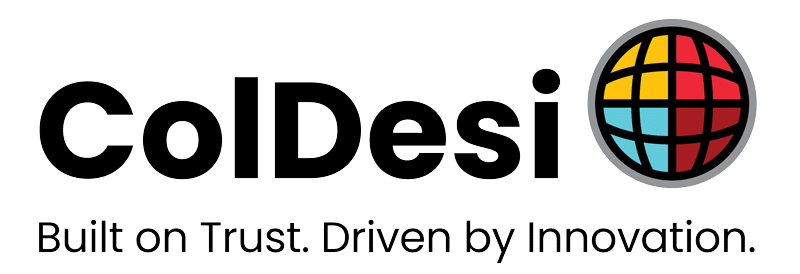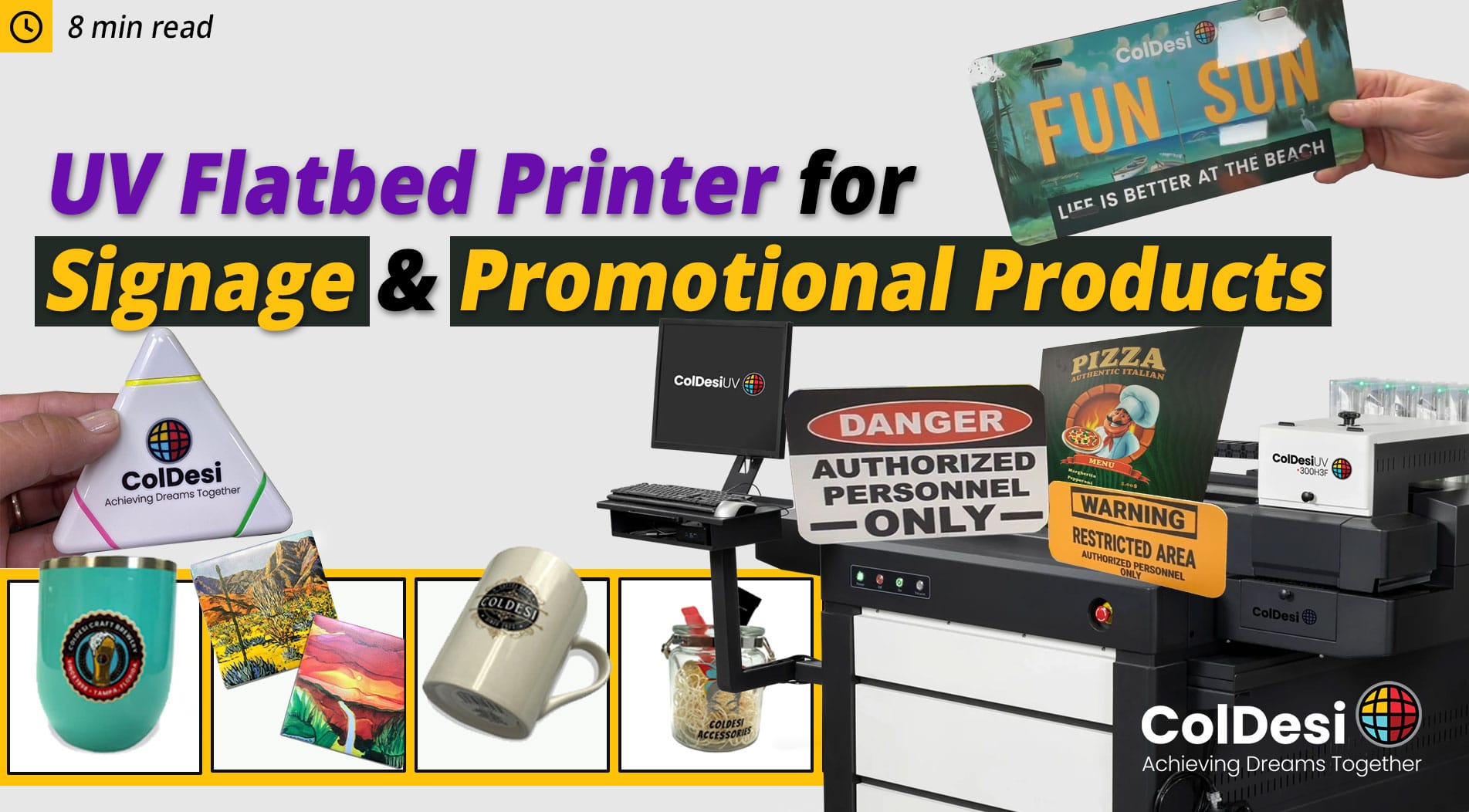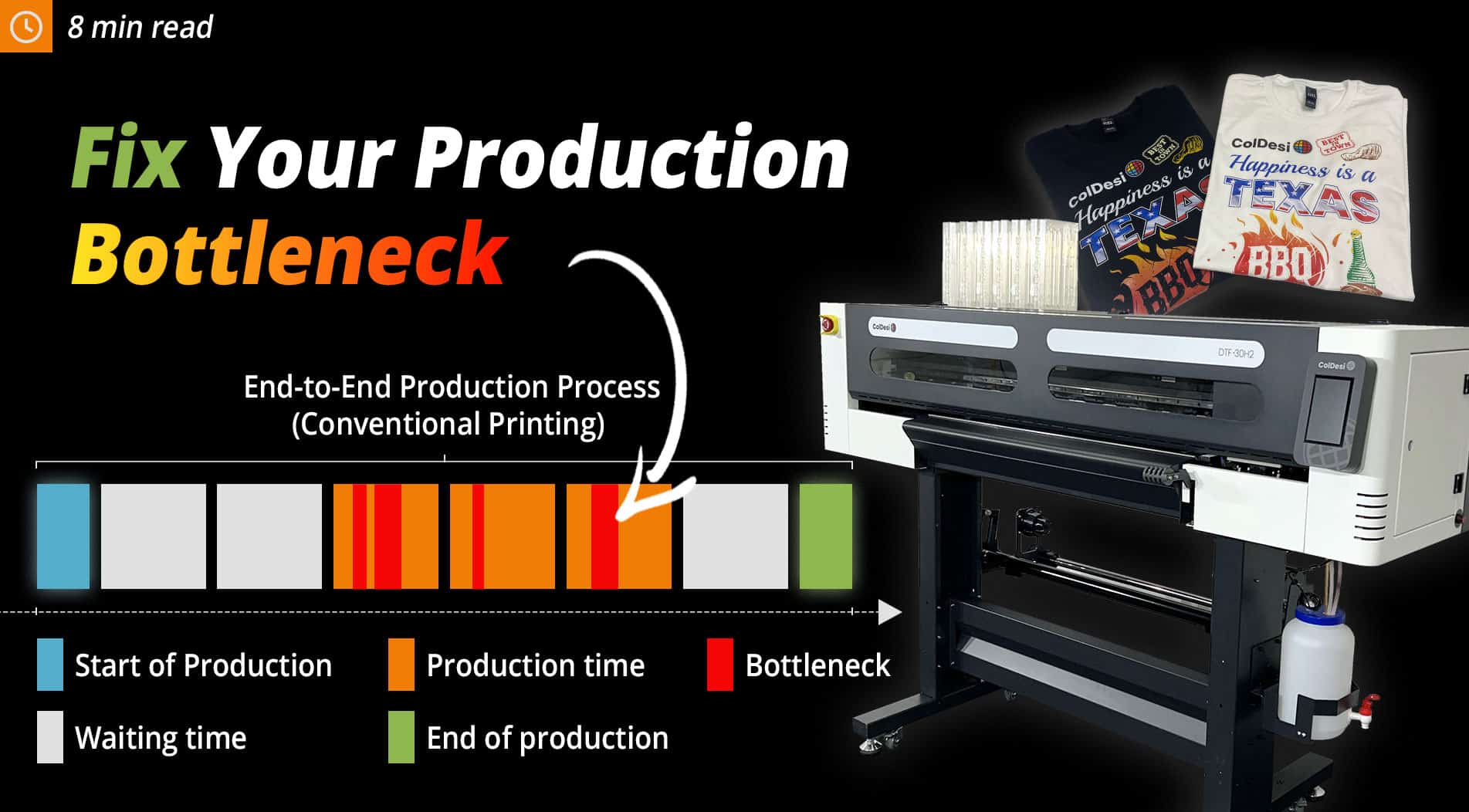Why Start an Embroidery Business?
Embroidery is one of the most profitable decoration methods in apparel. It delivers long-lasting designs, premium quality, and a professional look. Demand is growing across uniforms, promotional products, team wear, and fashion.
Starting an embroidery business in 2025 is easier than ever. Machines are more compact, digitizing software is smarter, and marketing tools are fully digital. With the right setup, you can serve local businesses, e-commerce stores, and national clients.
So here are our inverted steps to How to Start an Embroidery Business:
Before you do anything else or spend a dime, you need to define what you’ll make, how much you’ll charge, and who you’ll be selling to.
Section 1: The Basic Numbers, Niche and Potential
- Start with the End in Mind. What do you want to sell or make?
- Is it embroidered shirts and polos
- Athletic wear and letterman's jackets
- Do you want to make gifts and keepsakes
- Wedding favors
- Linens and specialty draperies
- Custom blankets or baby accessories
- Uniforms
- List all the people and companies you'll be selling to first.
This is critical because you will base a lot of decisions on what your customer will want. And different people want different things.
- Service company customers will want something very different from high school Parent-Teacher Associations.
- Expectant Mom's will not be keen on buying from someone that specializes in uniforms
- Wedding planners may intend to pay more for higher quality goods than someone who's wanting to buy cheap embroidered car mats.
Imagine the products those people will buy, and what they'll pay for them
- What do company polos go for in your area?
- How much will a hair salon pay for custom aprons?
- What is the going rate for a letterman's jacket?
- Or a horse blanket?
- Or a wedding table runner?
In other words, the first 3 things you need to know are:
2. Who are your customers going to be?
3. How much will they typically pay for what you are going to do?
Next, you’ll want to do the Math to make sure you’re Business makes sense.
You already know what your product(s) will be and how much you can charge.
- What will it cost you to make and sell them? Or = How much can you make?
1. How much does the blank item cost wholesale? In other words, the pillowcase, table runner, or polo you’ll be embroidering on.
2. How long do you think it will take you to make each one? This leads to how many you can make per hour.
Now subtract your sale price from your materials price and get your gross profit number per item.
Example: If you sell something for $25 and it costs you $12 in materials to make, that’s a $13 gross profit.
The fun part you can do next is to figure your potential income, but multiplying that gross profit by the number of the items you can embroider in an hour. In this case, we can imagine it’s 5/hour.
So the potential gross profit in THIS Business is $13 x 5 = $65/hour.
Section 2: The Embroidery Business Plan
- Embroidery Business Plan Check-in
This is the point where you want to evaluate the business potential and make sure it lines up with your expectations.
In the example above, is $65/hour in gross profit enough?
Don’t forget that you’ll still have to pay taxes, administrative costs, rent on space or lease payments on equipment. There’s no retirement savings or insurance being taken out of that number either.
If the numbers you came up with aren’t quite right. If they’re not enough, take another look back through the lists you made and see if you can change your answers enough to make that work.
Can you get more for the product you have planned?
First, check and see that you didn’t sell yourself short on the retail value of the product you want to sell.
Many people undervalue their products based on what THEY would pay, not what others would.
Is there something ELSE, something close that will earn you more money?
For example, if you want to be in the Etsy gift pillow business, is there a pillow or related product that sells for significantly more?
Or can you use better materials or something unique to help you earn a higher sales dollar for the same item?
- Who will your customers be?
Everyone knows that pricing can vary depending on who the buyer is.
You’ve probably noticed that many things at Target, for example, cost more than the same item at Walmart.
Or that gas in one part of town is more expensive than in another.
Good retailers know that different demographics, and geographics, can charge more.
So one thing you can do if you’re not entirely happy with that $65/hour example number, or the one you actually come up with, is reevaluating who you’re selling to.
For example:
- Logo'd polos and hats might sell for $20 each in your town, but $25-$30 each in the next one over.
- You may have based your estimated price for baby gifts on what you and your friends would pay, but you might focus on the Country Club part of town and base your Business on what THEY would pay.
Or you may switch gears completely and go from making custom onesies to embroidered hats for older girls.
- How much can you make?
Do that math one more time for each of the new scenarios you thought of because small changes can make a big difference.
Before, our sample calculation looked like this:
- Sell something for $25 each
- Earn $13 in profit for each
- Make 5 items per hour
- Potential gross profit in THIS business is $13 x 5 = $65/hour.
Now it might look this way:
- Sell something for $30 each
- Earn $18 in profit for each
- Make 5 items per hour
- Potential gross profit in THIS business is $18 x 5 = $90/hour.
See how that $5.00 retail price change made a difference?!!
Now that you know what your product(s) will be, who you’ll be selling to and how much money you can potentially make, it’s time to take the next step.
Section 3: Embroidery Business Marketing, Sales, and Methodology
Now that you know what your product(s) will be, who you’ll be selling to and how much money you can potentially make, it’s time to take the next step.
This section is more about how your business is going to work as opposed to what you’re going to sell. If you’re going to be successful, you can’t spend all of your time hunched over an embroidery machine. You’ll have to find and sell customers too.
- How will potential customers find you?
Even though the options can seem complicated, there are only a few simple ways you can get new customers. We’re using our own definitions here, so don’t confuse them for the more common uses.
Referrals/Word of Mouth
You're just going to sell to people you know. And hopefully people that the people you now know.
Online Marketing
Typically Search Engine Marketing – making it so if someone searches for "Custom Noodling Hats" in your area, you show up.
Outreach
This represents your ongoing effort to meet, network, and or sell to people online and in the real world.
- Referrals/Word of Mouth
Probably 90% of the embroidery businesses out there find their customers through word of mouth. This works particularly well initially if it’s some local event that made you want to go into the embroidery business in the first place.
Like you thought of going into the embroidered wedding gift business because you made some on your home embroidery machine, and everyone loved them.
Or you were looking for an embroidered hat for Sunday church services and couldn’t find anything you like.
In those cases, you and your friends, family and acquaintances are a kind of built in customer base.
Upsides and Downsides to Word of Mouth
The downside to the word-of-mouth-based business is that it’s tough to grow outside your immediate circle of friends or very local area. You might not WANT to charge the money you could because you know everyone you’re selling to personally.
So you can end up with low growth potential and diminished profits.
The biggest upside, and it is pretty big, is that it often doesn’t cost you any money to find customers.
Please note that we didn’t say that it’s FREE. Because you always invest something, time, samples, energy, no matter what you do.
- Online Marketing
This is what many people’s thoughts go to first when you talk about starting an embroidery business.
- Do I need a website?
- Should I get a shopping cart?
- Is selling on Etsy best?
- What about a Facebook store?
- Or a blog?
Whatever you decide here, even if it IS word of mouth, you’ll need some kind of online presence.
Upsides and Downsides to Online Marketing
The advantages of almost ANY online marketing presence is that it gives people the opportunity to find you, and somewhere to send people to that you meet in person.
And if you do it right it can really enhance a local business in particular. Google is so hyper-focused on local businesses getting found they provide some great free tools, like Google My Business, to help.
Of course, if you can get found when someone in your town searches for what you sell that CAN be an easy win.
The downside to online marketing is that you’ll have to learn how to do it and/or hire someone to help, and then never stop doing that.
Unless you’re a graphic designer with web experience, the website you make yourself will probably not be the best it can be to get your Business found.
Every website, social media page and even Google My Business listing needs regular attention. None are one-time events, so you’ll have to think about that too when you’re looking at your businesses profitability.
Make sure you add costs like we described here to any startup embroidery business costs you list.
- Outreach – In the Real World and Online
Creating a website, having an Etsy page or an Instragram account isn’t really “outreach” or Sales. It’s a part of marketing.
Outreach, the way we’re using the term here, is you personally or an employee actively contacting prospective customers. Either individually or in groups.
Examples of Outreach are:
- A booth at local markets or shows
- Attending Chamber of Commerce meetings or MeetUps
- Participating in local or niche market Facebook Groups
- Getting in your car with samples and calling on potential customers
- Phone calls
Upsides and Downsides of Outreach
The biggest downside is… that you probably won’t actually do it. You may, if you are just a social, sales-oriented person, but most people see it as more of a chore than other methods.
And this too is not a casual, occasional thing.
If Outreach is what you’re pinning the success of your startup embroidery business on, you’ll need to set a schedule and stick to it. The Upside is VERY big though. If you can master Outreach it’s very low cost path to big rewards. And it can amplify any of the other Marketing Methods you choose.
Here’s a schedule and some resources that will help you plan your activities and understand what it takes to accomplish each one:
Sample Marketing Schedule
| Monday | Tuesday | Wednesday | Thursday | Friday |
|---|---|---|---|---|
| Facebook group posts – join and/or participate | Post and Update on Google My Business | Prep samples for drop offs and customer visits | Facebook group posts – join and/or participate | Weekly activity recap – did you actually post? Visit? Record your successes and failure |
| Identify Instagram accounts that are successful in your niche – follow and share | Send reviews links to current embroidery customers | Plan your route | Identify Instagram accounts that are successful in your niche – follow and share | Look for weekend marketing opportunities like shows or markets |
| For Business oriented niches, expand your presence on LinkedIn | Research new potential customers, the area or niche you will visit personally | Go meet 20 people/businesses | For Business oriented niches, expand your presence on LinkedIn | Follow up with visits and new social contacts from the previous week |
| Twitch, Twitter, TikTok | Twitch, Twitter, TikTok |
Embroidery Business Startup Outreach Resources
Here’s a short podcast that describes how to market your Business in Facebook Group.
During this episode of the Custom Apparel Startups there’s a good outline of what your local sales activity might be:
- Monthly MeetUp and/or Monthly Networking Lunch, Breakfast or Meeting
And during this podcast episode, there’s a detailed description of the in-person networking approach:

Section 4: Choosing a Commercial Embroidery Machine
Your machine is the foundation of your business. Look for reliability, speed, and flexibility.
Avancé 1501C: A 15-needle, single-head machine with a 22″ × 14″ sewing field. Ideal for jackets, hats, and bulk orders.
HappyJapan Single-Head Machines: High-speed models like the HCU2 series reach 1,500 SPM and excel at continuous production.
Modular Options: Multi-head machines or networked single heads let you scale as demand grows.
There are several things to consider when you’re gearing up your gear to start an embroidery business. And the reason “choosing an embroidery machine” is so deep into this article is because what you’ve decided so far will determine the right machine.
First, if you’ve gotten this far you realize that running even a small customization business has a lot of moving parts. Maybe more than you expected.
If you are not ready to jump in, don’t! But if you are, the next step is to start investing in what it takes to actually MAKE what you’re going to sell.
- Commercial Embroidery Machines vs. Consumer Embroidery Machines
Your basic home style embroidery will just not be enough.
Sewing machines like the Brother PE800, for example, may have a nice low price. And it looks just like machines you might be used to working with, but…
- Consumer embroidery machines are not made to run all day, every day. The components they're built with are designed to be used a few hours a month, not 2-8 hours per day.
- Using 1 thread color at a time may be fine for some monogramming but switching for multi-color designs will eat up time. You could actually take 4 or 5 time as long sewing a multi-color design on a PE800 than on a multi-needle commercial machine
- The embroidery field is just too small. It reduces the options that you have for work you can accept and products you can make.
A professional embroidery machine you can use to run an actual business is multi-needle (12 or better) and has a large embroidery field.
And it comes with more and better-quality hoops, runs faster, is built better… There’s a great article here that explains:
Business embroidery machines are also, surprisingly, not that much more expensive than high end consumer or “prosumer” models.
- What to Look for in an Embroidery or Monogramming Machine
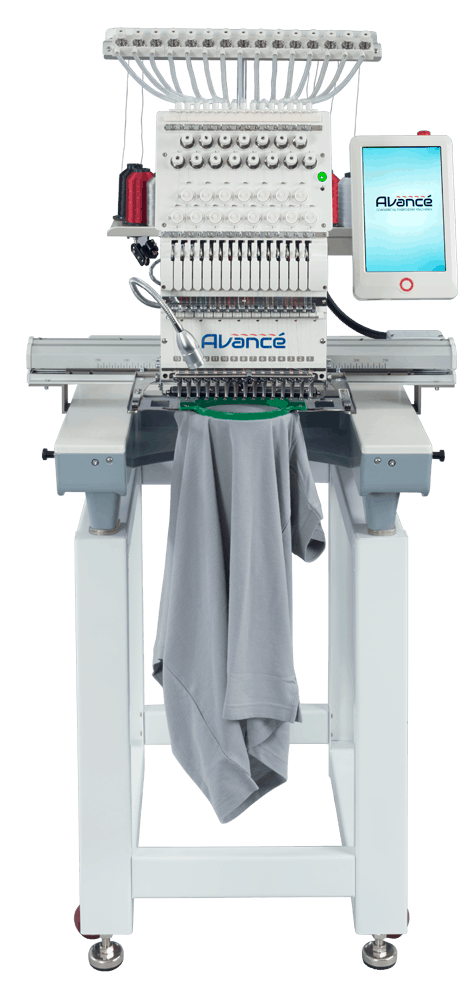
Where you Buy Matters
Please recognize that not only are the machines themselves built differently and have different features, but that they require different support as well.
Many startup embroidery businesses are started by hobbyists with ties to local sewing stores. Those stores are full of people that know how to do 1 off projects, use smaller machines and even do some repairs.
But your local sewing center does not know how to support your BUSINESS.
There's a big difference between someone having a problem with their single needle sewing machine while making a gift for a friend and someone with a 50 piece order to get out by the next day.
So do not start and end your selection process in your local market.
Commercial embroidery machine dealers and manufacturers are set up for doing Business with businesses. They have the expertise and the training available to match.
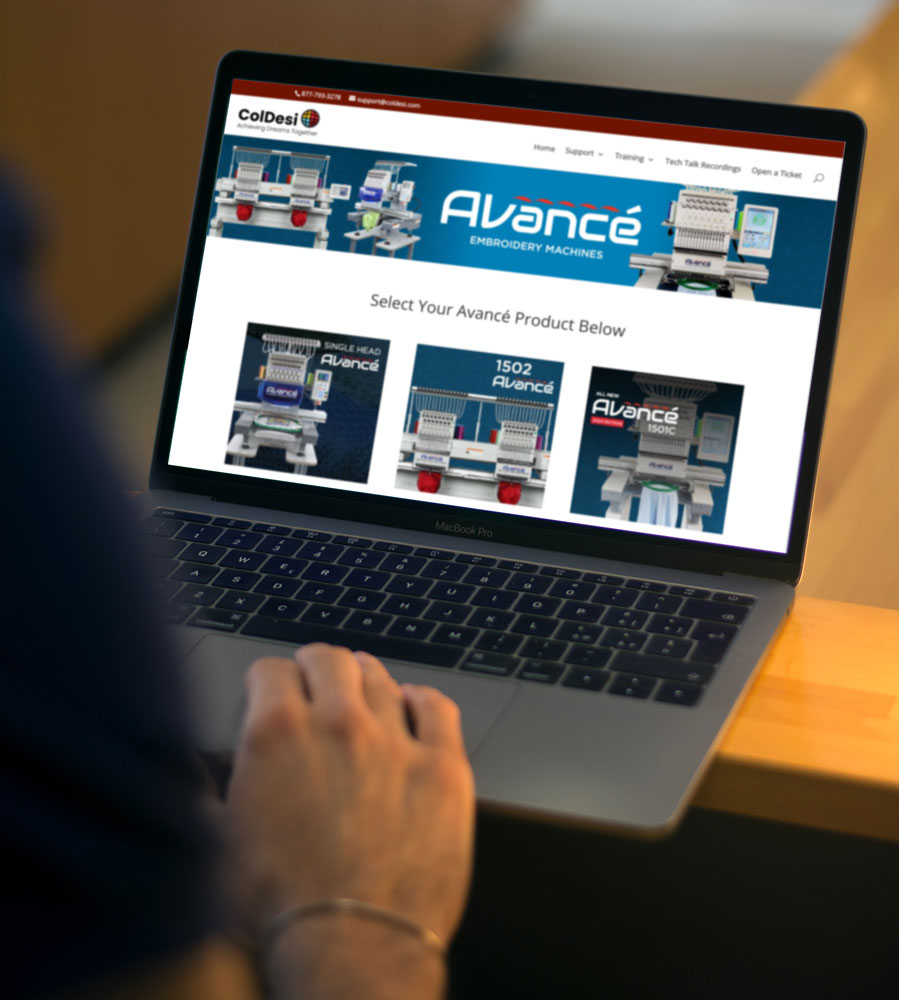
Don't worry about local support
Yes, it's great to be able to carry your machine into a local store and have someone look at it.
But modern support techniques that include FAQs and online videos, email support and live video support are actually FASTER and more convenient.
A well-organized technical support department may be able to send you video solution to fixing your problem right away. Or you may even be able to find it yourself using an interactive Trouble Shooter like this one: Avance Single Head Embroidery Support (coldesi.com)
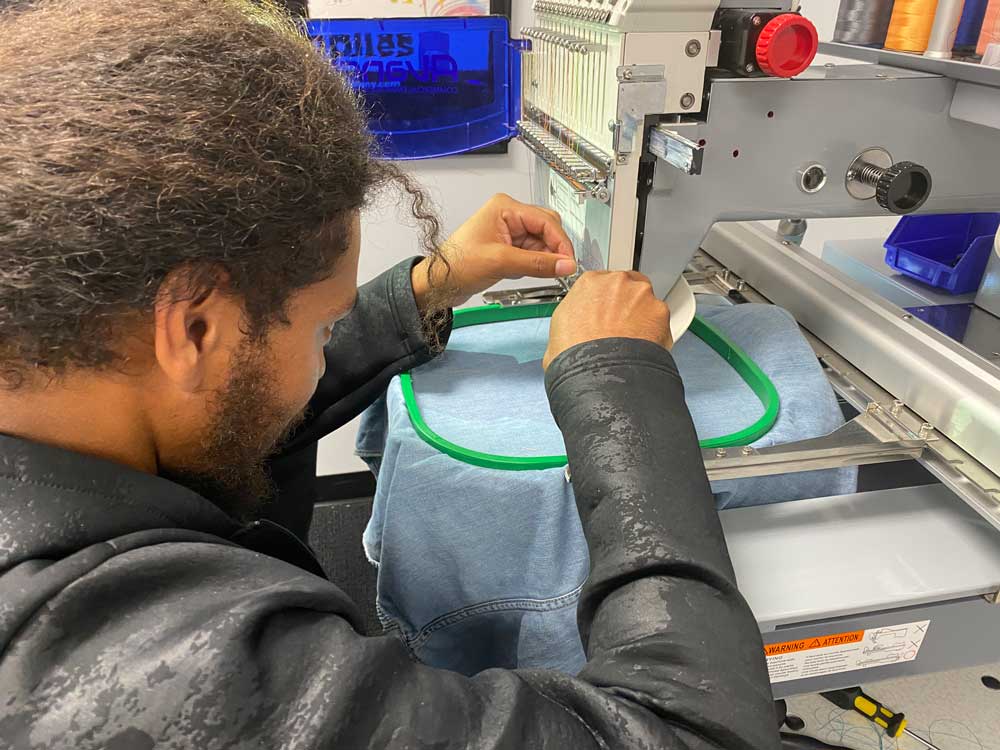
Training and Buying Used
It's tempting to purchase a used commercial embroidery machine!
They're often thousands of dollars less than new. Normally they're sold by people IN the embroidery business so you might assume a certain level of quality.
And after all, you probably have some experience working with your home embroidery machine anyway.
But unless you have direct experience on the same model commercial machine, you will 100% need training, ongoing technical support and use of the warranty.
- Top Features to Look for in a Business Embroidery Machine
- Multi-needles– a 12 needle or better is ideal. Professional embroiderers use multiple needles/colors for a variety of different things.
– For example, some like to use a different needle for caps, so they would set the machine up with 6 of one kind of needles and 6 of another.
– Some assume that they’ll have regular customers with 2 color logos to sew out and keep those combinations on the machine.
– Some use a specialty thread, like metallic, rayon or variegated and stock them on the machine as well.
- Large embroidery field – 2" x 4" left chest logos may be your bread and butter but saying yes to various items might help you get and keep customers. Any commercial machine will have a larger embroidery field than a home machine. That opens things up to you like:
– Jacket Backs
– Patches
– Table Runners
– Large Pillowcases
– Draperies
– Bags and more
- Hoops – any embroidery pro will tell you that the hoops you own can shorten how long it takes you to complete a job. And whether or not your successful doing it. You'll want as many hoops as you can get included with your purchase, and get any specialty hoops you might need as well.
– Good commercial machines, like that Avancé 1501C and 1201C, come with TWO of each hoop. So, while one garment is sewing you can hoop the next, assembly-line style.
– You may need specialty hoops if you’re embroidering things like thick jackets, sneakers, pockets, luggage, some bags, etc.
- Design memory – Have you ever had a hard time finding a file on your computer? You're going to have some great, regular customers and you don't want to use an older version of a logo, or lose a customers .dst file. So make sure you can store designs ON the embroidery machine. That way you can.
– Store your most common jobs ON the machine – and get started faster.
– Never lose a file you’ve sewn before.
– Hit the road and work shows, events and mall kiosks without a computer.
- Rolling Stand – it seems simple, but you'll be surprised how much table and diskspace an embroidery business can take up. Being able to roll your machine into a closet, or rearrange depending on what you're doing that day, is a big benefit.
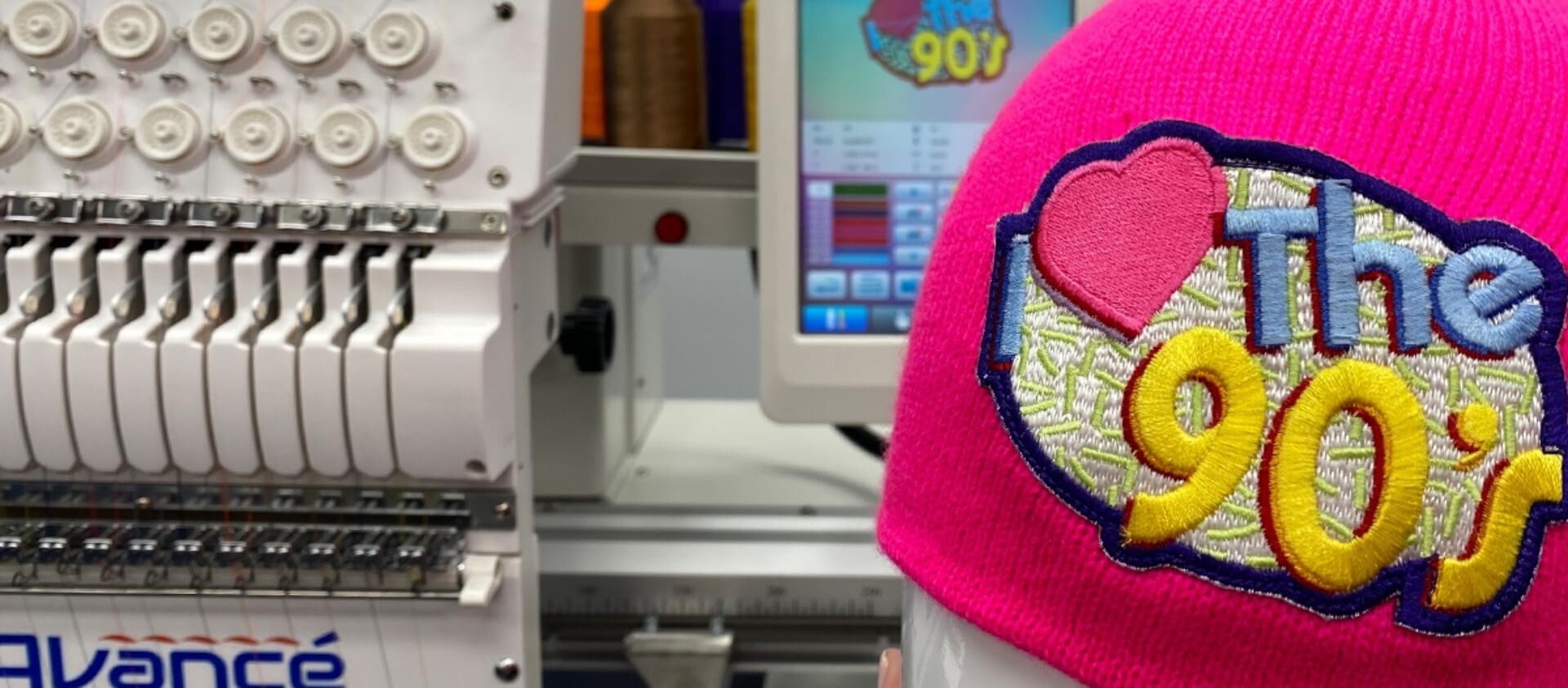
- What's the Best TIME to Start an Embroidery Business?
The best time to start is after you’ve gone through the processes, steps and absorbed the information above?
It’s really not about seasons, times of the year, the timing for taxes or waiting for a big sale on something. It’s about YOU, not the world around you…
ColDesi has had customers start their businesses in the best AND worst economic climates of the past 20 years and more. We’ve seen time and again that if you’re ready to start your Business and willing to put in the work – now is always a good time!
Checklist: How to Start an Embroidery Business in 2025
✔️ Select a commercial machine (Avancé 1501C, HappyJapan, or modular options).
✔️ Learn digitizing with modern platforms or hire a partner.
✔️ Set up a functional workspace with supplies and storage.
✔️ Build an online presence with SEO, social media, and e-commerce.
✔️ Create efficient, repeatable workflows for orders and production.
✔️ Plan startup finances and growth strategies.
Learning how to start an embroidery business in 2025 means combining proven methods with modern tools. With advanced machines, AI-powered digitizing, and digital marketing, embroidery is more accessible and profitable than ever. Businesses that embrace technology and strong branding will thrive in today’s market.
